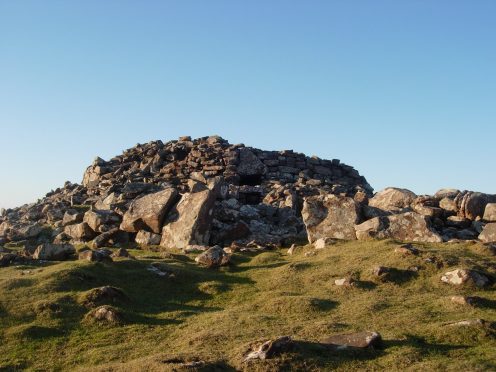A major project to excavate and better understand an Iron Age settlement in northwest Sutherland will begin next month.
Clachtoll Broch is a roundhouse which stands between 3ft and 10ft in height on a rocky knoll near the beach at Clachtoll, close to Stoer.
However the structure’s interior is full of rubble after it partly collapsed at some point between 150BC and 50AD, and it urgently needs excavation and conservation work.
The new £346,000 scheme will firstly involve an initial excavation on site which is due to start in the second week in July and finish at the end of September.
After this archaeologists will begin analysing finds beneath the rubble, then create interpretation signs to educate visitors about the people who lived in the broch and how they used it.
Gordon Sleight, chairman of Historic Assynt which has developed the Clachtoll Broch project, said: “It could be a very significant project because we think that the Broch fell down sometime between 150BC and 100AD and I don’t think anyone has been in to collect full deposits since. That gives a particularly good opportunity to try and discover much more about how people lived back then.”
Brochs were numerous and widespread in the north and west in Iron Age Scotland, and were being built in some places by around 500 BC. Many, however, continued in use well into the first millennium AD going through many changes in form throughout this time.
Historic Assynt has been involved at Clachtoll Broch since 2007 after locals expressed concern about the stability and safety of the structure.
A survey of the area was done initially and some initial conservation work was done in 2011 and 2014.
The Clachtoll Broch project is one of 28 projects across northwest Sutherland being delivered under the Coigach and Assynt Living Landscape Partnership Scheme, which aims to enhance the area’s natural, built and cultural heritage.
It has been funded by the Heritage Lottery Fund alongside further financial support from Historic Environment Scotland, SSE’s sustainable development fund, EB Scotland and the Pilgrim Trust.
The excavation and conservation work at Clachtoll Broch will be carried out by AOC Archaeology which is based at Loanhead, near Edinburgh.










